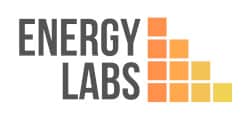If you’re an Australian homeowner, chances are you’ve heard of both heat pumps and heat recovery ventilation systems. But have you ever wondered how they compare? In this article, we’ll take a look at the differences between the two.
A heat pump hot water system works by taking advantage of the ambient air temperature to heat water. It does this by transferring heat from the outside air into a cold water tank, which is then heated to provide hot water for your home. Heat pumps can be more energy-efficient than traditional electric hot water systems, as they require less energy to operate. However, they tend to be more expensive upfront and require more maintenance than other systems.
On the other hand, a heat recovery ventilation (HRV) system works by taking air from inside your home and exhausting it outside. It then takes in fresh air from outside and uses it to pre-heat or pre-cool the outgoing air, thus reducing energy consumption. HRVs are particularly useful in colder climates where heating costs can be high, as they help reduce the amount of energy required to keep your home at a comfortable temperature. They also help reduce indoor humidity levels in summer months and improve indoor air quality by filtering out airborne pollutants such as pollen or dust particles.
When it comes to comparing these two systems, there are several things to consider. First, while both systems are designed to help reduce energy costs, HRVs tend to be more efficient than heat pumps when it comes to heating or cooling an entire home or building. Heat pumps also generally require more maintenance and repairs than HRVs due to their reliance on outdoor components such as fans and condensers. Additionally, while both systems can help improve indoor air quality, HRVs are typically better at this task due to their ability to filter out airborne pollutants before they enter your home.
Ultimately, deciding which system is best for you will depend on your budget and how much work you’re willing to put into maintaining each system over time. Heat pumps may be cheaper upfront but require more maintenance than HRVs; whereas HRVs may cost more initially but provide greater long-term savings due to their improved efficiency and lower maintenance needs. Ultimately though, either option could prove beneficial for those looking for ways of reducing their energy costs while improving indoor air quality in their homes!
